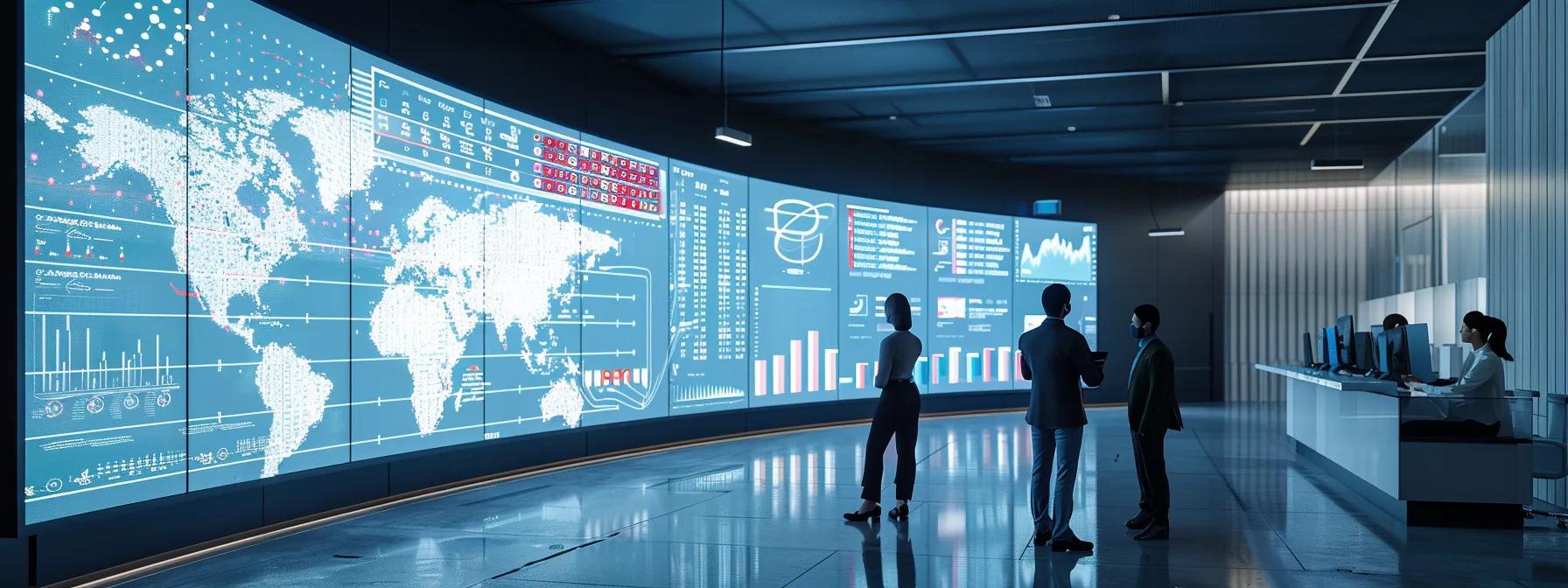
The solar energy industry is undergoing a major transformation powered by artificial intelligence (AI). As a solar project management expert, you understand that integrating AI into photovoltaic systems is revolutionizing how solar panels are constructed, maintained, and optimized for maximum energy efficiency. In this article, we explore how AI is expected to improve solar energy efficiency, emerging trends in predictive maintenance and smart grid integration, and the impact of data-driven insights and new technologies on sustainable energy adoption. You will also learn about the challenges and opportunities these advances present and how they may support global renewable energy goals. Each section provides concise answers supported by evidence and examples that reflect current trends and projected innovations in the solar energy domain.
These advancements promise to improve energy yield from solar cells while increasing accessibility to renewable energy by reducing costs and enhancing system reliability. Whether you manage a solar farm or work on residential installations, AI-driven solutions are fast becoming critical—from maximum power point tracking to grid connectivity. As you read on, you will see how future solar AI platforms will leverage sensor data, predictive maintenance, and smart integration techniques to support more sustainable and efficient energy solutions.
Transitioning now to a detailed look at the various facets of AI in solar energy, let’s explore how these technologies are poised to redefine solar power generation.
How Will AI Improve Solar Energy Efficiency in the Future?
AI is expected to transform solar energy systems by optimizing panel performance, adjusting operational parameters in real time, and predicting when maintenance is needed. Machine learning algorithms and deep neural networks are integrated with photovoltaic systems to perform diagnostics and optimize energy yields, significantly reducing losses from suboptimal panel orientations, dust, shading, and other environmental factors.
What AI Techniques Optimize Solar Panel Performance?
Machine learning and neural networks continuously analyze data from sensors across the installation. They use historical and real-time inputs—such as light intensity, weather conditions, and system performance—to optimize panel angle, tilt, and orientation through automated tracking systems. Deep learning models also predict degradation patterns in solar cells to schedule timely recalibration or cleaning. Studies show that AI-driven adjustments can improve panel efficiency by up to 15% as panels adapt dynamically to their surroundings.
How Much Can AI Increase Solar Energy Production?
Pilot projects indicate that AI can boost solar energy production by optimizing energy flow and reducing downtime. Smart systems using predictive analytics and machine learning can increase energy production by 10–15% compared to traditional fixed systems. By analyzing sunlight variability and forecasting weather conditions, AI systems adjust photovoltaic setups to match irradiance changes, improving return on investment and helping stabilize the grid with consistent energy outputs.
Which Data Sources Does AI Use to Enhance Efficiency?
AI systems enhance efficiency by integrating multiple data sources: – Photovoltaic sensor data: Voltage, current, and temperature measurements. – Meteorological data: Real-time and forecasted irradiance, temperature, humidity, and wind speed. – Historical performance data: Archived records of energy production and degradation. – Grid load information: Current demand and supply conditions. – Infrared and visual imaging: Detection of hot spots and physical damage.
By analyzing these streams, AI predicts performance trends and adjusts operations dynamically—for example, scheduling cleaning when soiling reduces efficiency.
What Are the Future Trends in Predictive Maintenance for Solar AI Systems?

Predictive maintenance is a significant benefit offered by AI in solar energy systems. By anticipating failures and optimizing maintenance schedules, AI extends the life of solar panels, maximizes energy output, and minimizes disruptions. This integration results in operational savings and improved reliability.
How Does AI Detect and Prevent Solar Panel Failures?
AI continuously monitors system parameters using time-series analysis and anomaly detection algorithms. It identifies deviations from normal performance—such as sudden voltage drops or temperature spikes that may signal issues like micro-cracks or hot spots. Once an anomaly is detected, the system alerts operators, allowing maintenance to be scheduled during planned downtimes rather than after a failure occurs.
What Cost Savings Can Predictive Maintenance Deliver?
By minimizing unplanned downtime and manual inspections, AI-based predictive maintenance can cut maintenance costs by 20–30%. Fewer emergency repairs and timely fixes mean increased production uptime and a better return on investment, while also preventing revenue losses from outages.
How Will Smart Grid Integration Advance With Solar AI Technology?
Smart grid integration paired with solar AI technology is leading to more efficient energy distribution and storage. AI-powered systems facilitate seamless communication between solar installations and the grid, improving energy management and reliability. By forecasting energy demand and adjusting storage or distribution, these systems maintain supply stability amid production and consumption fluctuations.
What Role Does AI Play in Energy Distribution and Storage?
AI acts as the central regulator for energy distribution. It integrates real-time inputs from solar panels, battery systems, and grid sensors to balance energy flows. Advanced algorithms determine when to store excess solar power and when to release it to the grid, reducing peak load stress and optimizing overall energy use. In overload conditions, predictive algorithms effectively manage battery discharge to meet demand.
How Will AI Enable Seamless Solar and Grid Connectivity?
Seamless connectivity is achieved by integrating IoT devices and smart sensors with robust communication networks. AI platforms compile data from decentralized sources into a unified control system, enabling grid operators to quickly adapt to changes in solar production and consumption. This is particularly important in microgrid configurations, where effective communication ensures that even remote installations stabilize the overall grid.
What Data-Driven Insights Will Future Solar AI Platforms Provide?

Future solar AI platforms will offer detailed data-driven insights to transform solar installation management. By combining real-time and historical data, these platforms reveal operational trends and performance forecasts that help fine-tune energy capture and schedule preventive maintenance.
How Will AI Analyze Solar Panel Performance in Real Time?
AI continuously processes sensor data, such as ambient temperature, irradiance, and electrical output. Machine learning algorithms compare current data with historical baselines to identify trends indicating inefficiencies or impending failures. When panels underperform during peak sunlight, the system may recommend cleaning or recalibration, ensuring every component contributes to an optimal energy yield.
What Consumer Energy Consumption Patterns Will AI Reveal?
By integrating smart meter readings, historical usage logs, and real-time grid data, AI can uncover detailed consumer consumption patterns. This analysis shows peak usage periods, daily fluctuations, and seasonal variations, allowing utility companies to adjust distribution strategies and provide personalized energy-saving recommendations.
How Will These Insights Support Sustainable Energy Decisions?
The insights from solar AI platforms reduce uncertainties in energy management. Operators can use these data-driven forecasts to simulate various scenarios, optimize battery storage discharge, and design solar farms for maximal yield. These informed decisions help both private and public sectors reduce costs and greenhouse gas emissions, contributing to a more sustainable energy transition.
Which Emerging AI Technologies Will Shape the Future of Solar Energy?
Emerging AI technologies will further transform the solar energy industry by introducing greater automation, improved predictive accuracy, and enhanced system scalability. These innovations will streamline processes from energy production to distribution while reinforcing reliability with real-time optimization and predictive maintenance.
How Will Machine Learning Algorithms Evolve for Solar Applications?
Future machine learning algorithms will be more adaptive and capable of processing larger data sets with higher precision. They may self-optimize based on ongoing performance changes and include external variables—such as local air quality or nearby construction activity—to improve energy predictions and shift from reactive to proactive management.
What Is the Impact of AI-Powered Automation on Solar Systems?
By automating routine tasks like panel angle adjustments and data processing, AI-driven automation minimizes human error and maintains continuous system optimization. This leads to more reliable operation, lower maintenance costs, and greater overall energy production, especially in large-scale installations where operational consistency is key.
How Will AI Integration Affect Solar Energy Scalability?
AI integration allows the centralized management of extensive networks of solar panels. By coordinating performance across multiple sites and optimizing energy flows collectively, AI enables scalable solar energy solutions that can easily adapt to growing renewable energy demands without significantly increasing operational complexity.
What Challenges and Opportunities Will Future Solar AI Technologies Face?

While AI in solar energy brings notable benefits, it also faces challenges such as ensuring data security, integrating with legacy systems, and meeting regulatory compliance. At the same time, the opportunities include improved system resiliency, comprehensive energy management, and new revenue streams from optimized energy production.
What Are the Main Technical and Regulatory Challenges?
Challenges include integrating data from diverse sources, maintaining cybersecurity, and developing algorithms that accurately model complex environmental conditions. Regulatory issues focus on data privacy, standardizing AI protocols for energy systems, and aligning international renewable energy policies. Addressing these challenges requires collaboration among industry leaders, policymakers, and technology experts.
How Can AI Overcome Solar Energy Adoption Barriers?
AI can reduce barriers to solar energy adoption by automating complex assessment processes and lowering costs. Rapid, accurate proposals for solar installations and efficient predictive maintenance lower the risk and investment required, making renewable energy more accessible to both residential and commercial customers. Additionally, by ensuring stable integration with conventional grids, AI builds consumer confidence in solar technology.
What Market Opportunities Will Solar AI Innovations Unlock?
Solar AI innovations are expected to unlock various market opportunities, including new revenue streams from performance-based contracts and advanced energy management services. For commercial players, AI enables real-time energy audits and efficient asset management, while consumers benefit from more affordable and reliable systems. The integration of technologies like edge computing, IoT sensors, and blockchain also supports secure energy transactions that fuel market growth.
How Will Solar AI Technology Impact the Future of Sustainable Energy?
Solar AI technology is set to significantly enhance sustainable energy by improving system efficiency, reliability, and environmental compatibility. Integrating smart solar systems with grid infrastructure increases energy independence and supports global efforts to reduce carbon emissions. By automating key processes and providing real-time performance insights, solar AI offers a clear pathway to a cleaner, more sustainable energy future.
What Environmental Benefits Will AI-Enhanced Solar Systems Provide?
AI-enhanced systems maximize energy capture and reduce inefficiencies, leading to higher energy output per watt and less reliance on fossil fuels. This improvement helps lower carbon emissions and mitigate climate change. In addition, predictive maintenance extends the lifespan of solar panels, reducing waste and the need for frequent replacements—key factors in achieving sustainable, environmentally friendly energy production.
How Will AI Support Global Renewable Energy Goals?
By driving advancements in efficiency, operational reliability, and scalability, AI helps countries maximize their use of renewable energy. The enhanced integration with smart grids enables a resilient, distributed energy network that can meet diverse load demands. As research and development continue in national renewable energy laboratories, AI will play a central role in reaching international carbon reduction and sustainability targets.
What Is the Future Outlook for Solar AI Adoption Worldwide?
The outlook for solar AI adoption worldwide is promising. As technology lowers costs and improves system reliability, AI-driven solar systems become critical components of the global energy infrastructure. Innovations in machine learning, IoT connectivity, and edge computing will drive growth in solar energy across emerging and established markets, helping to reduce greenhouse gas emissions and ensuring a sustainable, resilient energy future.
Frequently Asked Questions
Q: How does AI optimize the performance of solar panels?
A: AI uses machine learning algorithms to analyze sensor data on irradiance, temperature, and panel output, adjusting panel orientation and tilt in real time. This dynamic realignment maximizes energy capture and helps predict maintenance needs by flagging performance irregularities early.
Q: What specific data sources are crucial for enhancing solar energy efficiency with AI?
A: Key data sources include real-time sensor outputs, meteorological data, historical performance records, grid load information, and imaging data from infrared and visual cameras. These inputs help AI forecast energy output and schedule maintenance proactively.
Q: How does predictive maintenance using AI reduce costs in solar energy systems?
A: By continuously monitoring system performance and detecting early anomalies, AI enables timely repairs before major failures occur. This reduces emergency repairs and downtime, saving an estimated 20–30% on maintenance expenses.
Q: In what ways can AI support smart grid integration?
A: AI coordinates energy distribution from decentralized solar installations, optimizes battery storage, and regulates energy flow based on real-time demand. This ensures seamless connectivity between solar systems and the grid, enhancing overall stability and efficiency.
Q: What challenges could hinder the adoption of AI in solar energy?
A: Challenges include integrating diverse sensor data, ensuring cybersecurity, and meeting regulatory requirements. Standardizing AI protocols and fostering industry collaboration are key to overcoming these barriers.
Q: How will AI-driven insights impact sustainable energy decisions?
A: AI-driven insights reveal consumption patterns, forecast performance, and identify underperforming components. These data-based insights enable more efficient planning, optimized resource allocation, and reduced environmental impact, supporting long-term sustainability.
Q: Can AI integration scale to manage large solar installations effectively?
A: Yes, advanced AI algorithms can manage extensive networks of solar panels by aggregating data and coordinating maintenance, ensuring that even large-scale solar farms operate at peak efficiency with minimal human intervention.
Final Thoughts
Solar AI technology is steering us toward a future of smarter, more efficient, and better-integrated renewable energy systems. By optimizing production, enhancing predictive maintenance, and enabling dynamic grid connectivity, AI boosts overall system performance while supporting global sustainable energy goals. With continued advancements and broader adoption, solar installations are poised to become more reliable and accessible, paving the way for significant environmental and economic benefits. Embrace these innovations to unlock new opportunities for sustainable energy management and create a resilient energy future.



